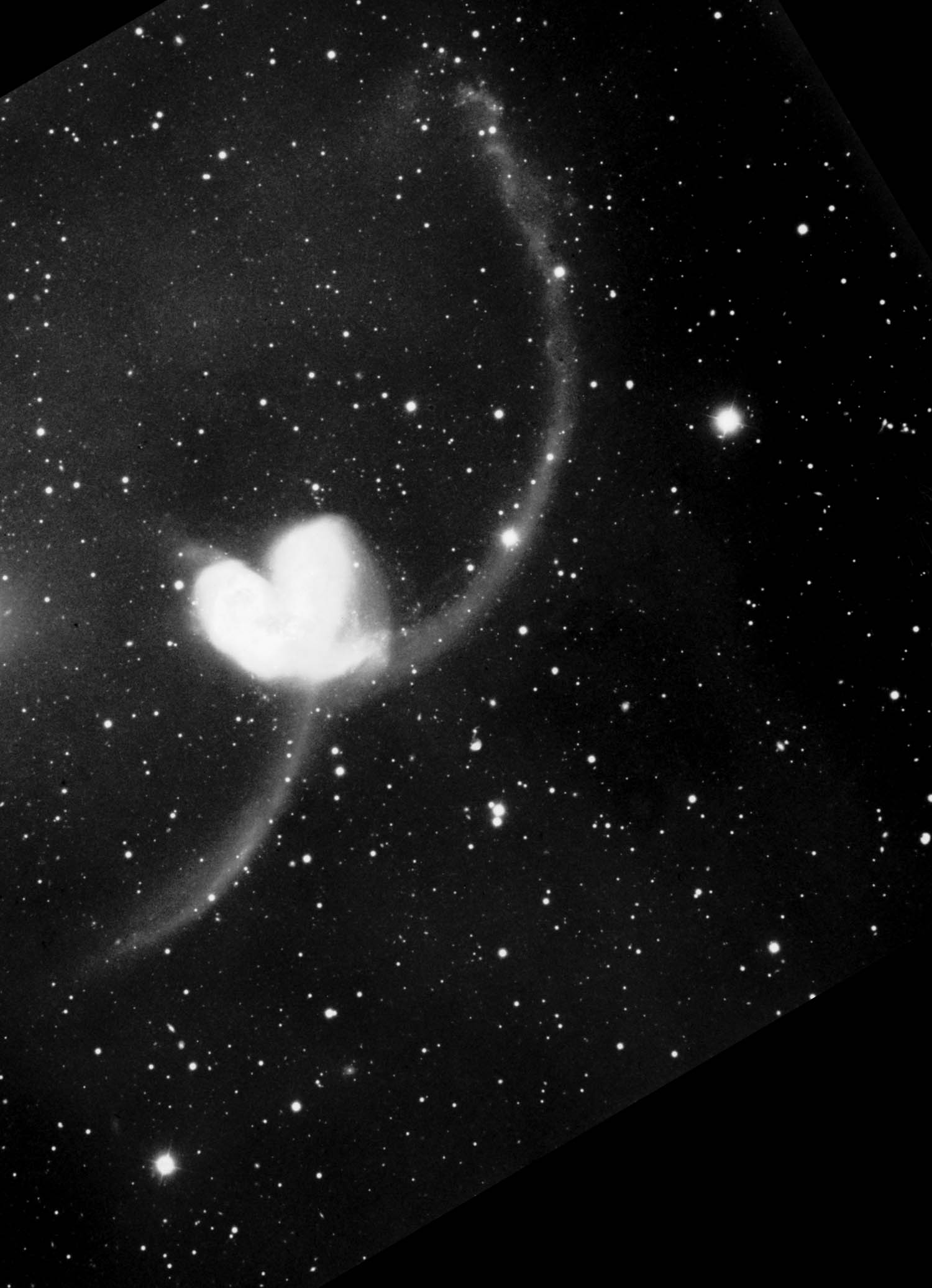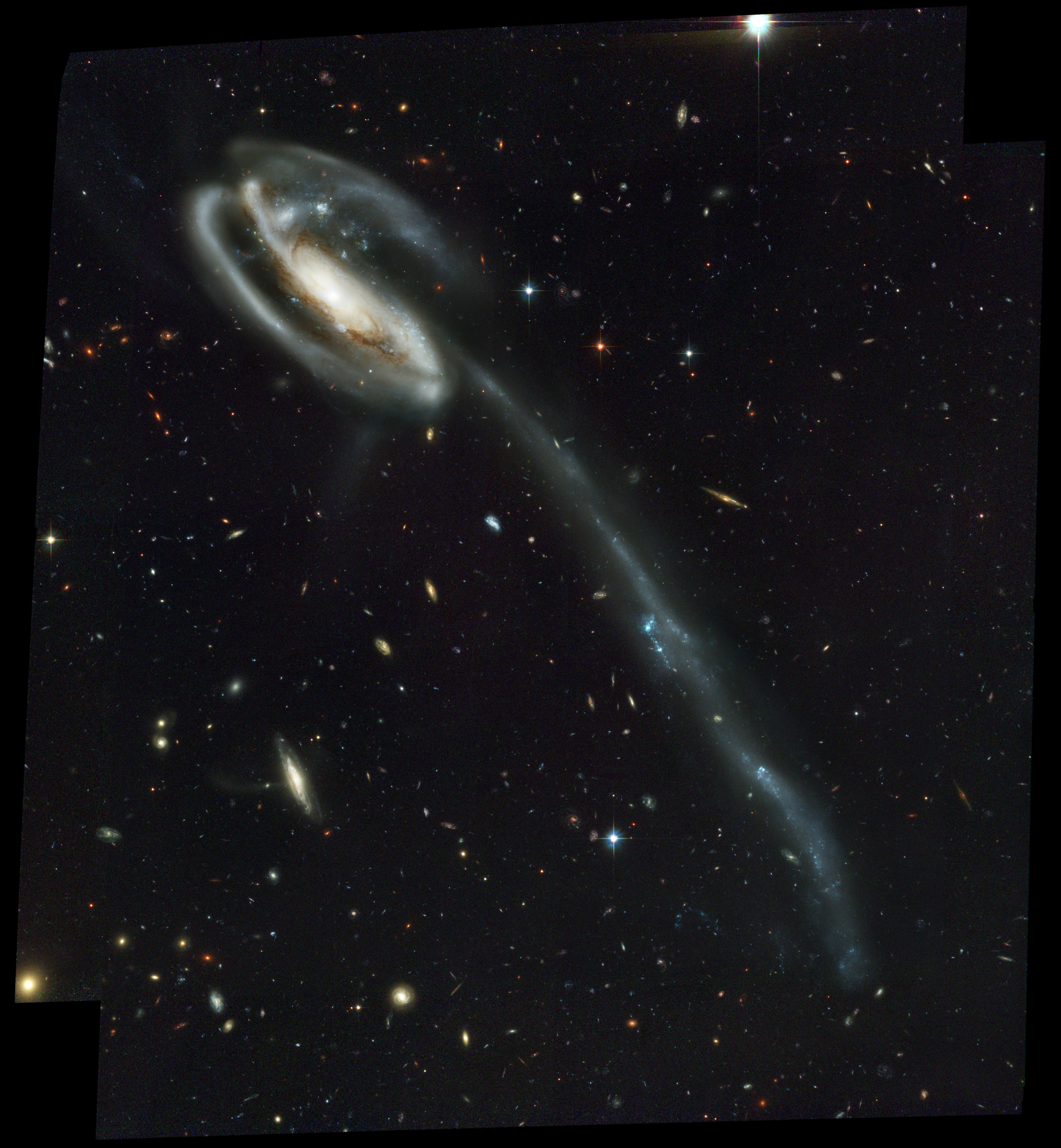|
NGC 2298
NGC 2298 is a globular cluster in the southern constellation of Puppis. Discovered by James Dunlop on May 30, 1826, it is probably a former member of the disputed Canis Major Dwarf galaxy. The cluster is being disrupted by the galactic tide, trailing a long tidal tail A tidal tail is a thin, elongated region of stars and interstellar gas that extends into space from a galaxy. Tidal tails occur as a result of galactic tide forces between interacting galaxies. Examples of galaxies with tidal tails include the .... References External links * NGC 2298at Wikisky at Astrosurf NGC 2298at Deepskypedia * Globular clusters Puppis 2298 {{star-cluster-stub ... [...More Info...] [...Related Items...] OR: [Wikipedia] [Google] [Baidu] |
NGC 2298
NGC 2298 is a globular cluster in the southern constellation of Puppis. Discovered by James Dunlop on May 30, 1826, it is probably a former member of the disputed Canis Major Dwarf galaxy. The cluster is being disrupted by the galactic tide, trailing a long tidal tail A tidal tail is a thin, elongated region of stars and interstellar gas that extends into space from a galaxy. Tidal tails occur as a result of galactic tide forces between interacting galaxies. Examples of galaxies with tidal tails include the .... References External links * NGC 2298at Wikisky at Astrosurf NGC 2298at Deepskypedia * Globular clusters Puppis 2298 {{star-cluster-stub ... [...More Info...] [...Related Items...] OR: [Wikipedia] [Google] [Baidu] |
New General Catalogue
The ''New General Catalogue of Nebulae and Clusters of Stars'' (abbreviated NGC) is an astronomical catalogue of deep-sky objects compiled by John Louis Emil Dreyer in 1888. The NGC contains 7,840 objects, including galaxies, star clusters and emission nebulae. Dreyer published two supplements to the NGC in 1895 and 1908, known as the ''Index Catalogues'' (abbreviated IC), describing a further 5,386 astronomical objects. Thousands of these objects are best known by their NGC or IC numbers, which remain in widespread use. The NGC expanded and consolidated the cataloguing work of William and Caroline Herschel, and John Herschel's ''General Catalogue of Nebulae and Clusters of Stars''. Objects south of the celestial equator are catalogued somewhat less thoroughly, but many were included based on observation by John Herschel or James Dunlop. The NGC contained multiple errors, but attempts to eliminate them were made by the ''Revised New General Catalogue'' (RNGC) by Jack W. Sulent ... [...More Info...] [...Related Items...] OR: [Wikipedia] [Google] [Baidu] |
J2000
In astronomy, an epoch or reference epoch is a instant, moment in time used as a reference point for some time-varying astronomical quantity. It is useful for the celestial coordinates or orbital elements of a Astronomical object, celestial body, as they are subject to Perturbation (astronomy), perturbations and vary with time. These time-varying astronomical quantities might include, for example, the mean longitude or mean anomaly of a body, the node of its orbit relative to a reference plane, the direction of the apogee or Perihelion and aphelion, aphelion of its orbit, or the size of the major axis of its orbit. The main use of astronomical quantities specified in this way is to calculate other relevant parameters of motion, in order to predict future positions and velocities. The applied tools of the disciplines of celestial mechanics or its subfield orbital mechanics (for predicting orbital paths and positions for bodies in motion under the gravitational effects of other bodi ... [...More Info...] [...Related Items...] OR: [Wikipedia] [Google] [Baidu] |
Puppis
Puppis is a constellation in the southern sky. Puppis, the Latin translation of "poop deck", was originally part of an over-large constellation Argo Navis (the ship of Jason and the Argonauts), which centuries after its initial description, was divided into three parts, the other two being Carina (the keel and hull), and Vela (the sails of the ship). Puppis is the largest of the three constellations in square degrees. It is one of the 88 modern constellations recognized by the International Astronomical Union. Features Argo Navis was sub-divided into three sections in 1752 by the French astronomer Nicolas Louis de Lacaille, including Argûs in puppi. Despite the division, Lacaille kept a single set of Bayer designations for the whole constellation, Argo. Therefore, Carina has the α, β, and ε, Vela has γ and δ, Puppis has ζ, and so on. In the 19th century, these three sections of Argo became established as separate constellations and were formally included in the list of ... [...More Info...] [...Related Items...] OR: [Wikipedia] [Google] [Baidu] |
Melotte Catalogue
In astronomy, the Melotte catalogue is a catalogue of 245 star clusters by British astronomer Philibert Jacques Melotte. It was published in 1915 as ''A Catalogue of Star Clusters shown on Franklin-Adams Chart Plates''.Melotte, P. J"A Catalogue of Star Clusters shown on Franklin-Adams Chart Plates" ''MmRAS'', 1915 Catalogue objects are denoted by ''Melotte'', e.g. "Melotte 20". Dated prefixes include as ''Mel + catalogue number'', e.g. "Mel 20". Vital statistics * The catalogue contains 245 objects: 161 open clusters, 81 globular clusters, 2 asterisms, and 1 galaxy. * Objects are spread out across the entire celestial sphere. * Mel 2 is the northernmost Melotte object, located at a declination of +85º in the constellation Cepheus. * Mel 129 is the southernmost Melotte object, located at a declination of -82º in the constellation Apus. Melotte objects which are also Messier objects The Melotte catalogue contains 55 objects which are part of the Messier catalogue: * Messi ... [...More Info...] [...Related Items...] OR: [Wikipedia] [Google] [Baidu] |
Globular Cluster
A globular cluster is a spheroidal conglomeration of stars. Globular clusters are bound together by gravity, with a higher concentration of stars towards their centers. They can contain anywhere from tens of thousands to many millions of member stars. Their name is derived from Latin (small sphere). Globular clusters are occasionally known simply as "globulars". Although one globular cluster, Omega Centauri, was observed in antiquity and long thought to be a star, recognition of the clusters' true nature came with the advent of telescopes in the 17th century. In early telescopic observations globular clusters appeared as fuzzy blobs, leading French astronomer Charles Messier to include many of them in his catalog of astronomical objects that he thought could be mistaken for comets. Using larger telescopes, 18th-century astronomers recognized that globular clusters are groups of many individual stars. Early in the 20th century the distribution of globular clusters in the sky w ... [...More Info...] [...Related Items...] OR: [Wikipedia] [Google] [Baidu] |
James Dunlop
James Dunlop FRSE (31 October 1793 – 22 September 1848) was a Scottish astronomer, noted for his work in Australia. He was employed by Sir Thomas Brisbane to work as astronomer's assistant at his private observatory, once located at Paramatta (now named Parramatta), New South Wales, about west of Sydney during the 1820s and 1830s. Dunlop was mostly a visual observer, doing stellar astrometry work for Brisbane, and after its completion, then independently discovered and catalogued many new telescopic southern double stars and deep-sky objects. He later became the Superintendent of Paramatta Observatory when it was finally sold to the New South Wales Government. Early life James Dunlop was born in Dalry, Ayrshire, Scotland, the son of John Dunlop, a weaver, and his wife Janet, ''née'' Boyle. Dunlop was educated at a primary school in Dalry and went to work at a thread factory in Beith when he was 14. He also attended a night-school in Beith kept by a man named Gardiner. ... [...More Info...] [...Related Items...] OR: [Wikipedia] [Google] [Baidu] |
Canis Major Dwarf
The Canis Major Overdensity (''CMa Overdensity'') or Canis Major Dwarf Galaxy (''CMa Dwarf'') is a disputed dwarf irregular galaxy in the Local Group, located in the same part of the sky as the constellation Canis Major. The supposed small galaxy contains a relatively high percentage of red giants and is thought to contain an estimated one billion stars in all. At the time of its announcment, the Canis Major Dwarf Galaxy is classified as an irregular galaxy and is thought to be the closest neighboring galaxy to the Earth's location in the Milky Way, being located about away from the Solar System and from the Galactic Center. It has a roughly elliptical shape and is thought to contain as many stars as the Sagittarius Dwarf Elliptical Galaxy, the previous contender for closest galaxy to the Earth's location in the Milky Way, though later studies disputed this conclusion. Discovery The existence of a strong elliptical-shaped stellar overdensity was reported in November 200 ... [...More Info...] [...Related Items...] OR: [Wikipedia] [Google] [Baidu] |
Galactic Tide
A galactic tide is a tidal force experienced by objects subject to the gravitational field of a galaxy such as the Milky Way. Particular areas of interest concerning galactic tides include galactic collisions, the disruption of dwarf or satellite galaxies, and the Milky Way's tidal effect on the Oort cloud of the Solar System. Effects on external galaxies Galaxy collisions Tidal forces are dependent on the gradient of a gravitational field, rather than its strength, and so tidal effects are usually limited to the immediate surroundings of a galaxy. Two large galaxies undergoing collisions or passing nearby each other will be subjected to very large tidal forces, often producing the most visually striking demonstrations of galactic tides in action. Two interacting galaxies will rarely (if ever) collide head-on, and the tidal forces will distort each galaxy along an axis pointing roughly towards and away from its perturber. As the two galaxies briefly orbit each other, thes ... [...More Info...] [...Related Items...] OR: [Wikipedia] [Google] [Baidu] |
Tidal Tail
A tidal tail is a thin, elongated region of stars and interstellar gas that extends into space from a galaxy. Tidal tails occur as a result of galactic tide forces between interacting galaxies. Examples of galaxies with tidal tails include the Tadpole Galaxy and the Mice Galaxies. Tidal forces can eject a significant amount of a galaxy's gas into the tail; within the Antennae Galaxies, for example, nearly half of the observed gaseous matter is found within the tail structures. Within those galaxies which have tidal tails, approximately 10% of the galaxy's stellar formation takes place in the tail. Overall, roughly 1% of all stellar formation in the known universe occurs within tidal tails. Some interacting galaxy pairs have two distinct tails, as is the case for the Antennae Galaxies, while other systems have only one tail. Most tidal tails are slightly curved due to the rotation of the host galaxies. Those that are straight may actually be curved but still appear to be stra ... [...More Info...] [...Related Items...] OR: [Wikipedia] [Google] [Baidu] |
Globular Clusters
A globular cluster is a spheroidal conglomeration of stars. Globular clusters are bound together by gravity, with a higher concentration of stars towards their centers. They can contain anywhere from tens of thousands to many millions of member stars. Their name is derived from Latin (small sphere). Globular clusters are occasionally known simply as "globulars". Although one globular cluster, Omega Centauri, was observed in antiquity and long thought to be a star, recognition of the clusters' true nature came with the advent of telescopes in the 17th century. In early telescopic observations globular clusters appeared as fuzzy blobs, leading French astronomer Charles Messier to include many of them in his catalog of astronomical objects that he thought could be mistaken for comets. Using larger telescopes, 18th-century astronomers recognized that globular clusters are groups of many individual stars. Early in the 20th century the distribution of globular clusters in the sky wa ... [...More Info...] [...Related Items...] OR: [Wikipedia] [Google] [Baidu] |








